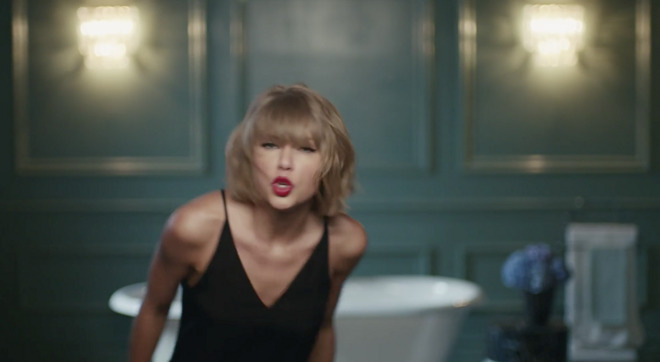Apple's marketing strategy for its nascent music streaming service is inspired by the music industry itself, the company revealed on Monday alongside a new one-minute spot featuring pop sensation Taylor Swift.

Apple is working to involve artists in the creative process, content chief Larry Jackson told Fast Company. The iPhone maker wants its streaming service to serve as a "clubhouse" for artists in hopes that it will provide a leg up on competitors.
"I've had this idea for a few years, that you could have this creative haven for artists, and there could be synergy among these people in the clubhouse, and this campaign is a perfect manifestation of that," Jackson said. "That first ad, for example, the Drake and Future album was a one-week exclusive on Apple Music, they're both in the clubhouse. To use that song, from that album by two guys who wear the jersey, in that commercial, was such a symbiotic thing, and had such unspoken power because you've got Drake, Future, and Taylor, who are all part of the Apple Music family, so to speak. To have Drake and Future benefit from a commercial with Taylor, made me really proud."
Swift herself is said to have been the inspiration behind her now two-spot run. The first ad -- in which she loses a battle with a treadmill -- was a major success, and was joined Monday by a new, somewhat less clumsy one.
"Taylor Swift lives at Apple Music, Drake lives at Apple Music, with so many other artists," Jackson added. "They use the product. This isn't a toothpaste ad. This is a place where their ideas are carried through with respect and reverence. We want to be able to allow artists to come here and have their ideas happen in their purest form. That's why I'm so proud of this campaign--Taylor came to us with an idea, and I protected it for dear life, because it's that good."
According to Jackson, Apple's distribution strategy is tried and true: the company intends to treat the campaign like a record release.
"You release one single, it's got a certain longevity, then the next single drops," he said. "What we're doing here, to avoid it all fading out too soon, is using the same cadence as an album--spot comes out, hype dies down two week later, then out comes another spot, same thing happens, then drop the next one. So we're using the same approach with spots as we would with singles."
